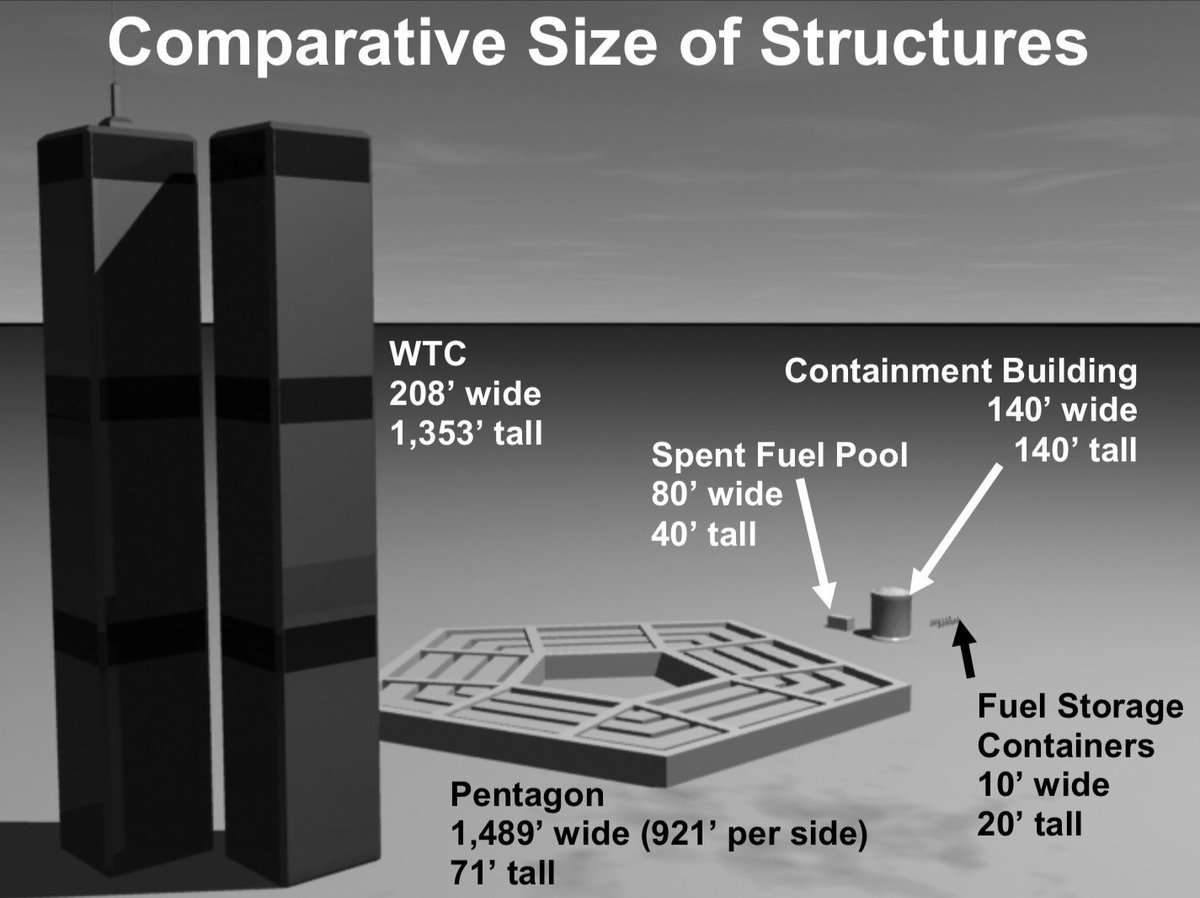A containment building of a #NuclearPowerPlant is a thick structure design to resist earthquakes, overpressure and hurricane winds.🌪
But, have you ever wonder what would happen if a jet crashed into it? Let’s find out together 🛩
But, have you ever wonder what would happen if a jet crashed into it? Let’s find out together 🛩

Lucky for us, @SandiaLabs solved this question way back in 1988.
They launched a supersonic jet against a concrete wall to test its resistance. 🤯 Crazy, right? BUT, to our surprise, it only caused cracks of 60mm deep in the concrete.
interestingengineering.com/crashed-jet-nu…
They launched a supersonic jet against a concrete wall to test its resistance. 🤯 Crazy, right? BUT, to our surprise, it only caused cracks of 60mm deep in the concrete.
interestingengineering.com/crashed-jet-nu…
Ok, but that was a test. What about now?🤔
As part of the probabilistic risk analysis done for the #NPPs, the risk of a jet ACCIDENTALLY striking a plant is considered, but NOT an intentional attack.
Let’s ask the experts about the risk of an impact in a Containment Building👇🏻
As part of the probabilistic risk analysis done for the #NPPs, the risk of a jet ACCIDENTALLY striking a plant is considered, but NOT an intentional attack.
Let’s ask the experts about the risk of an impact in a Containment Building👇🏻
After the terrible attacks in the U.S. on 9/11, the possibility of a jet hitting critical infrastructures began to raise. ⚠️
So in 2002, @NEI developed a study that shows what would happen if a jet crashed into a spent fuel pool, dry containers & a containment building.
So in 2002, @NEI developed a study that shows what would happen if a jet crashed into a spent fuel pool, dry containers & a containment building.

So, let's dive into the potential consequences of a #nuclear containment building and make sure there's nothing to worry about. 🤓
First, let's say we have a 204-ton jet 🛩, which was the most widely used aircraft in the US, an compare it to a nuclear containment building:
First, let's say we have a 204-ton jet 🛩, which was the most widely used aircraft in the US, an compare it to a nuclear containment building:

The containment building of a #NuclearPowerPlant houses the nuclear reactor and part of its auxiliary systems. It’s s a thick structure made of reinforced concrete 👀 Check it out! 



Now, the wingspan of our jet (52m) is somewhat larger than the diameter of a typical containment building (40m).
Also, our plane's engines are about 15m apart, so let's assume… the WORST🫣: the fuselage and both engines colliding perpendicularly with the building.
Also, our plane's engines are about 15m apart, so let's assume… the WORST🫣: the fuselage and both engines colliding perpendicularly with the building.

What happened? Well, the results indicated that no part of the engines, fuselage, wings, or fuel entered the interior of the containment building. 🙌🏻
The structure did’t fracture!! 😎
…BUT there was crushing & splintering of the material at the point of impact.
The structure did’t fracture!! 😎
…BUT there was crushing & splintering of the material at the point of impact.
However, both the vessel and its cooling circuits are covered with thick concrete walls 👇🏻 which would also be capable of absorbing part of the projectiles that entered the building in the event of an unlikely failure. 

So, with this we can determine that the structures that house the nuclear fuel are robust and can protect it from the impact of large commercial aircraft. ✈️ 🤓 

Would you like to know more about the possible consequences of an impact on the spent fuel pool or dry containers for spent fuel? 👇🏻
Let me know what should we discover next!!
Let me know what should we discover next!!
• • •
Missing some Tweet in this thread? You can try to
force a refresh

















